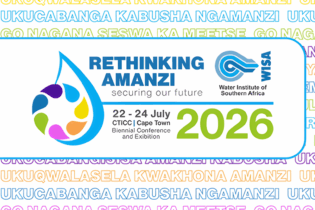At a prestigious ceremony held in Parkview Moyo Restaurant on 28 November 2012 a Water Research Commission (WRC)-funded research project was awarded for its excellence in public participation. The first Southern African Core Values Awards for Excellence in Public Participation nominated the project conducted by The Association for Water and Rural Development, (AWARD) as providing appropriate public participation guidelines specifically designed to be used by Catchment Management Agencies (CMA’s) when drawing up their Catchment Management Strategies that are meant to be highly participative, according to the National Water Act of 1998. The decision for this honour was made by an esteemed panel of local and international judges.
The WRC project was recognised as a second runner up for meeting the seven core value requirements set up by the International Association for Public Participation (IAP2). IAP2 South Africa was established as a regional affiliate to IAP2 in December 2010 with an aim of showcasing excellence in the field of public participation and to galvanise regional practitioners and decision makers towards raising standards of practice. In the first runner up position was Environmental Resources Management (ERM) for their Ore Line Expansion Project Public Participation Process. The overall winner was Sonja Pithey Consulting for the City of Cape Town Waste Review Stakeholder engagement process. “The WRC prides itself for funding a study which gets such high level recognition as part of a wide portfolio of water and governance related research, which provides a comprehensive and functional approach to public engagement at the level of Water Management Areas,” says Eiman Karar, Executive Manager for Water Resources Management at WRC. Upon receiving the certificate Derick du Toit, Project manager at AWARD says “ Despite the strong emphasis on public participation in the National Water Act (NWA), South Africa’s public participatory processes is poorly conceptualised, misdirected and often perceived as confusing by stakeholders. ‘Participation fatigue’ is the consequence of this, accompanied by a growing frustration with the implementation of the content of the Act.”The report TT 455 /10, entitled “Public participation in the drafting of Catchment Management Strategies made Simple” Report number is available at the WRC and can be used by all practitioners in the field, including policy makers and Catchment Management Agencies responsible for ensuring participatory decision making specially when developing Catchment Management Strategies. It possesses considerable detail regarding the various steps required in putting a Catchment Management Strategy together.
According to Karar, a central premise in the world hailed water legislation in South Africa is active citizenry and public engagement in managing our precious and scarce feshwater resources. A key responsibility of the CMA is to deal with imbalances and localised areas of water stress through the catchment management strategies which deal with descrete hydrologically defined areas. The reconciliation between demand and supply is essential for making decisions associated with granting new licences and reviewing reapplications. Commenting on the project Du Toit says: “CMA’s need to have a holistic profile of key characteristics related to water, and the likely future profile, in order to provide a sound basis for the development of appropriate and effective strategic direction. Stakeholders need to have a shared concept of what it is they will be collaboratively managing for current and future generations. This starts with a collective description of the present state of the water management area and its sub catchments. After describing the current status projected trends should show how the catchment could look in a period of 10 or 20 years.”






